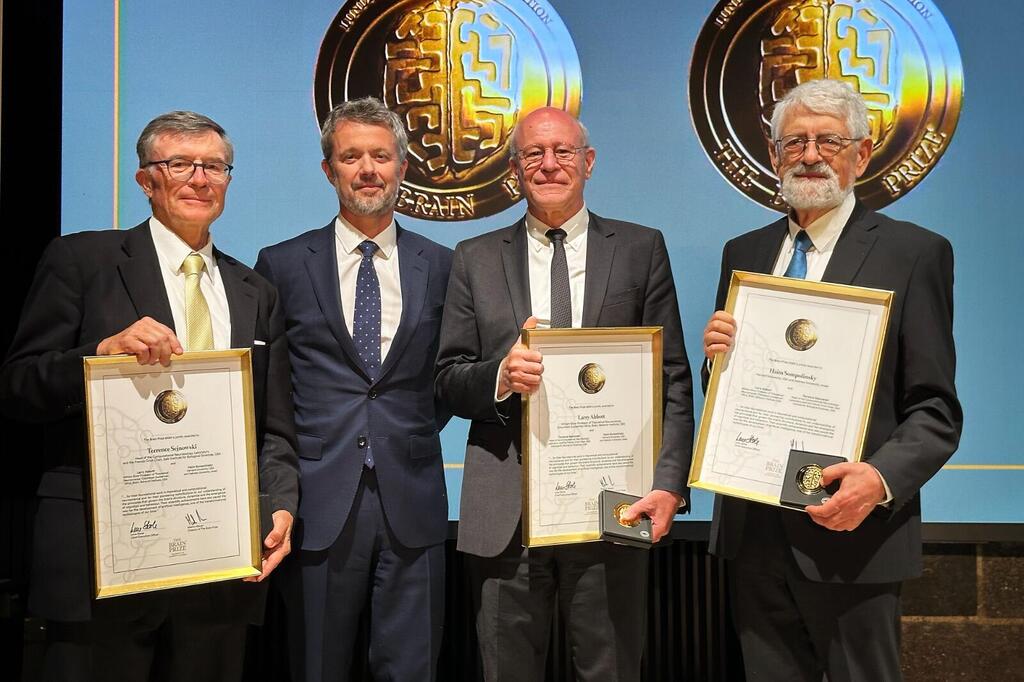Getting your Trinity Audio player ready...
In a grand ceremony attended by King Frederik X of Denmark, Prof. Haim Sompolinsky from the Hebrew University of Jerusalem was honored with the prestigious brain research award from the Danish Lundbeck Foundation.
At 74, Prof. Sompolinsky is a distinguished figure in computational neuroscience, recognized for his groundbreaking work on neural circuit dynamics. He is a prominent member of the Edmond and Lily Safra Center for Brain Sciences at the Hebrew University and a professor emeritus at the Racah Institute of Physics. Additionally, he serves as a professor at Harvard University's Center for Brain Science.
2 View gallery


Prof. Sompolinsky (right) with the King of Denmark (second from the left)
(Photo: Jacon Nielsen)
Prof. Sompolinsky's legacy is deeply rooted in Denmark, where he was born. His father, the late Prof. David Sompolinsky, played a significant role in the Danish resistance during World War II, helping to ferry hundreds of Jews to safety in Sweden in 1943.
The Lundbeck Foundation's award, established in 2011, is one of the highest honors in brain research. It recognizes exceptional contributions spanning basic to clinical-applied research, awarding a prize of 1.3 million euros shared among the winners. This year, Prof. Sompolinsky shares the accolade with Prof. Larry Abbott of Columbia University and Prof. Terrence Sejnowski of the Salk Institute, both leading figures in theoretical and computational neuroscience.
Prof. Sompolinsky's contributions to neuroscience are monumental. He has illuminated how the brain identifies spatial positioning and coordinates physical movements. "These functions are not just human; animals perform them too, allowing us to record their brain activity and make significant strides in understanding higher-level brain functions like language, planning and reasoning," he said in an interview with Yedioth Ahronoth.
One of his most significant discoveries is the brain's non-hierarchical organization of neurons. His concept of the "ring attractor" demonstrates how neural groups operate in a circular architecture, continuously generating patterns that hypothesize about the world. "When external signals align with a hypothesis, the brain maintains its state. If not, it adjusts, moving the ring accordingly," he explained.


